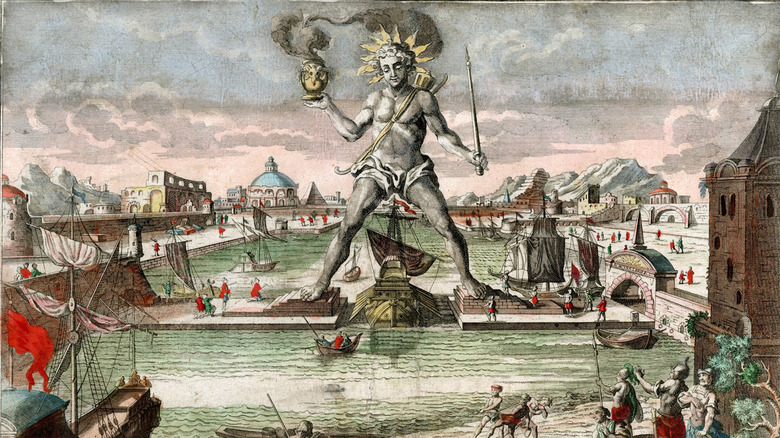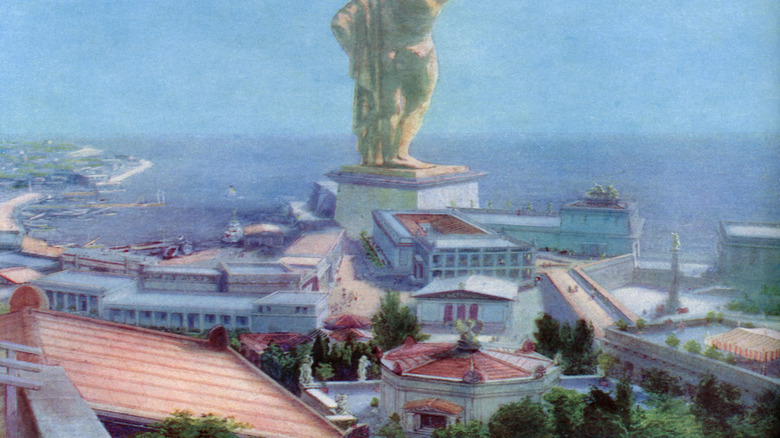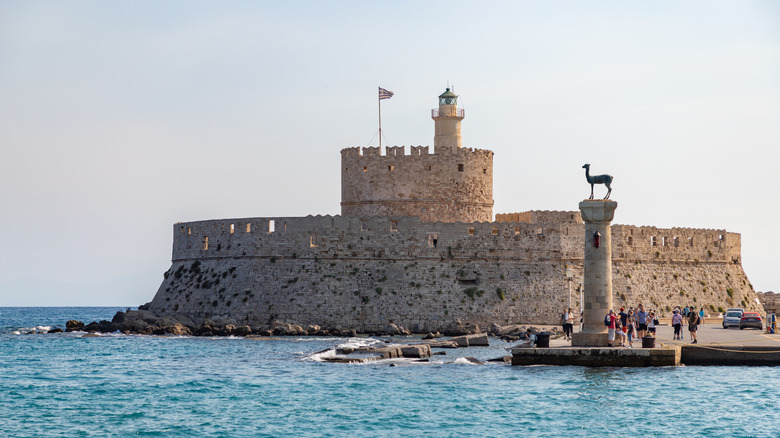Why Hasn't This Ancient Wonder Of The World Been Rebuilt?
The Seven Wonders of the Ancient World have captivated the imaginations of history enthusiasts ever since they were first laid out in the writing of Antipater of Sidon around 2,200 years ago. Though the exact list varied across different early publications, the seven most commonly accepted today are the Pyramids of Giza, the Hanging Gardens of Babylon, the Statue of Zeus, the Mausoleum of Halicarnassus, the Temple of Artemis, the Pharos of Alexandria, and the Colossus of Rhodes. Only one of these, the Pyramids of Giza, survives to the present day.
However, in recent years, there have been repeated discussions about whether it would be feasible to bring another of these ancient wonders back to life. A potential new Colossus of Rhodes has drawn the attention of potential developers in Greece since the 1990s. There have been several proposals, some of which were timely and feasible, while others seemed outlandish and unlikely to chime with Greece's economic climate. Ultimately, the project has yet to see the ancient monument brought back to life.
The Colossus of Rhodes: A significant monument
The original Colossus of Rhodes was undoubtedly one of the most spellbinding monuments ancient Greeks could possibly have laid their eyes on. An enormous statue that supposedly stood by the harbor in the ancient coastal city of Rhodes, the Colossus was a depiction of Helios, the Greek sun god. Fittingly, it was made of bronze plates and was said to stand at a height of 70 cubits, or around 105 feet.
There have been various artists' impressions of what the Colossus might have looked like. Some sources show it as raising a hand aloft, as does the later Statue of Liberty — its designer, Frédéric-Auguste Bartholdi, was inspired by the Colossus. Elsewhere, it is said that the statue was shielding an eye, a reference to the brightness of the sun. There have also long been suggestions that the enormous structure actually straddled the entrance to the harbor, meaning that boats would pass between the statue's legs. Experts now believe that this fanciful idea would have been impossible to achieve with the engineering knowledge of the day.
The Colossus at Rhodes was built in 12 years between 294 and 282 B.C. to memorialize Demetrius I Poliorcetes' siege of Rhodes, which started a decade before construction began. Half a century later, it fell during a major earthquake. Its remains reportedly lay in place for more than eight centuries, after which invading Arabian troops are said to have seized the remains for scrap metal.
Will the Colossus stand again?
The Colossus of Rhodes sounds like quite a sight. But despite public interest in the Seven Wonders of the Ancient World and the Colossus in particular, attempts to revive the sun god have so far come to nothing. In 1999, it was announced that the island would attempt to recreate the Colossus to memorialize the start of the new millennium and roadmapped a fundraising project that would have the statue in place in time for the 2004 Olympic Games in Athens. However, the scheme never went any further.
The plan was resurrected in 2008 and again in 2015, when it was suggested that the statue could house tourist attractions, including a museum and restaurant. It could also be powered by solar panels, a nod to both its depiction of a sun god and the growing necessity of the use of renewable energy in building and engineering projects. The new proposal arrived when Greece was in the middle of a major financial crisis, and while supporters of the plan claimed it would create jobs and attract tourism, others found it far too indulgent for an era that required austerity. Sadly, it seems that, at least for now, the Colossus of Rhodes must remain among the many world landmarks that have been lost to history.


